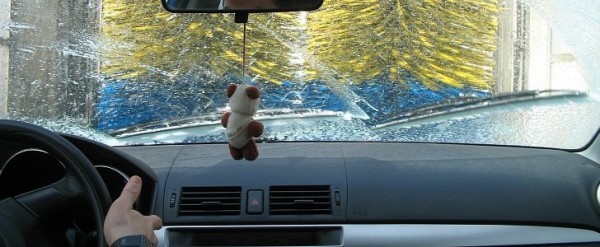 5 photos
5 photos




Here are but a few methods of getting rid of those pesky marks left by the demising insects. But before we get into that, let's take the time to understand why bugs are so particularly difficult to remove from the car, no matter where they hit: the grille, the hood or the windshield.
Some of these buggers tend to contain acidic substances which is why some of the time they tend to bite into the paint. That will cause you a bigger pain in the derrière after the bugs get a chance to dry out, because then it will be even more difficult to get them off without chipping the paint.
Most of us will take the mechanical removal approach, forcing the scratch resistance of our paint job, while others take a more scientific approach to it. Attacking the problem from a chemical point of view is often better than using sharp or pointy objects so close to your precious (and sometimes expensive) paint job.
Many people recommend soaking the bug stain for a couple of minutes with the wondrous solution known as WD 40 which is a penetrating oil sold in most hardware stores. Just spray on the dead bug, let it penetrate for a while and then simply rub it off with a clean cloth.
Another idea is to stick to classic bug and tar removing products but as some of the people out there might know, these don't always work, which makes it frustrating spending the money in the first place.
A good scrub might sometimes to the job, so before you go spending money on the “super wash” version at you local car wash, try to see if you can't do the job yourself in your driveway. Since you care so much about your car, you're bound to put more heart into the matter and thus get a better result.
When all else fails, when the scrubbing, the spraying, the wiping and even the grinding down come to no avail, you have only one option left: a new paint job.
The other nasty place where bugs tend to stick is the windshield, which is even a more tricky place to clean, since you can't really use oil-based products. The idea here is pretty much the same, let the stain soak for a while before attempting to clean it. You can do this by covering up the spot with a cloth soaked in special cleaning soap or another cleaning product.
The best idea is to use a microfiber cloth on your windshield as they don't leave as much lint as a regular fabric would. These go very well with the water-soap combination and a big plus is that they don't cause a dent in your budget either. For extra-sticky spots, try adding a little baking soda to the water. Its granules are small so they won't cause scratches to the glass.
The next solution is not for the faint-hearted and it requires a steady hand. Try rubbing the smudge with a light scouring pad, like a “000” steel wool. This will remove those stubborn bug residues that you can't normally get off with soap and water.
A less conventional method of removing bug stains from your windshield is to use some cola. The chemical composition of the drink will dissolve the bug juices and make it easier to remove. All you have to do is be careful not to get any on your paint job. At the end, make sure you scrub it with some soap and water, to wash off the Coke.
Some of these solutions might seem a little too extreme if your car is either very expensive or very rare. But in that case, you probably have the dosh to get a professional scrub. For the rest of us, the hoi polloi, the idea is to try cleaning these stains as soon as possible, because once they dry up, the acid in the bugs has the time to eat into the paint.


Leave a Reply